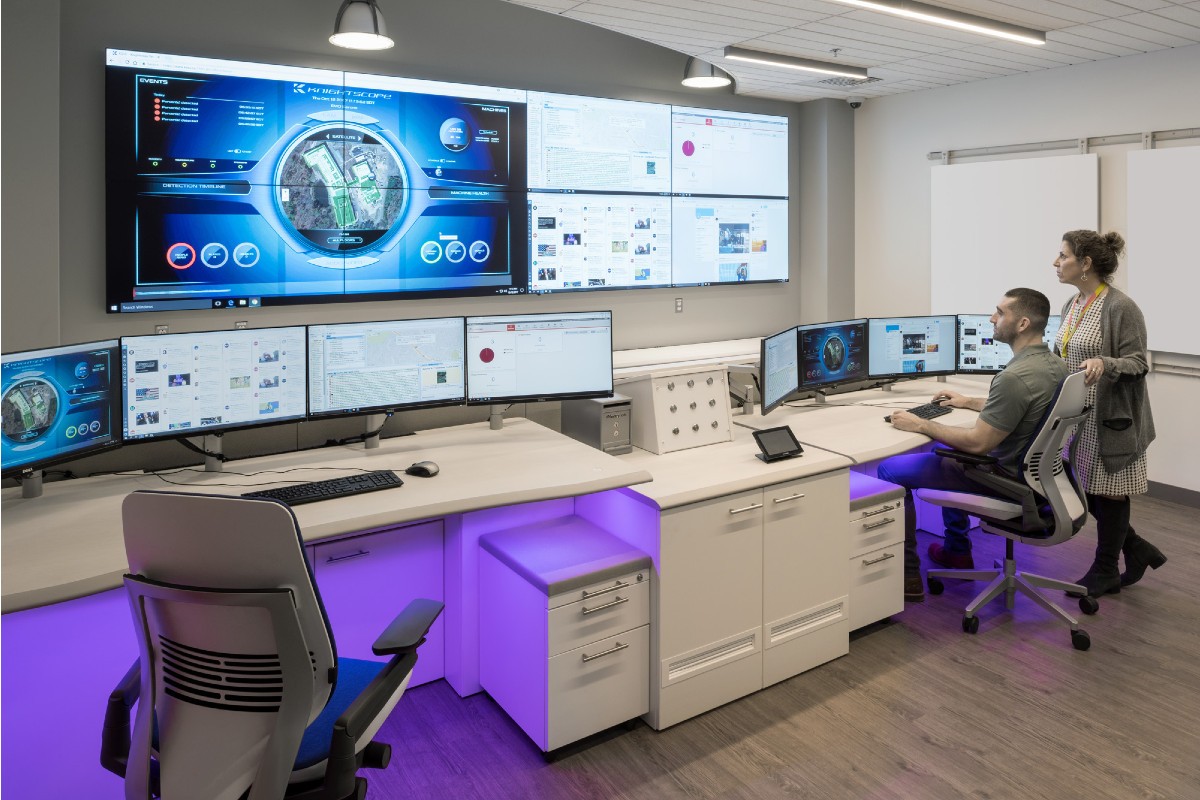Real-time operations centers serve a variety of purposes across multiple industries. The one thing that is consistent? They are essential to continued operations.
Since these rooms are so important, it may come as a surprise to know many – maybe even most – are not optimally designed. And while designing such a pressure-filled, vital space may not be an easy task, it is imperative to do it correctly. An oft-overlooked element to operations center design is one of the most important: the human factor.
It’s key to remember that these rooms are staffed for long shifts; operators need to be there, and comfortably, for hours at a time in potentially stressful situations. Additionally, these rooms are staffed 24/7. If your design isn’t as best as it could possibly be, the elements of your control room – or the people who staff it – will be worn down in months.
Average vs Best Practice Design
An average quality design will not take all ergonomic factors into account. Per Lundmark, author of the book Ergonomics – A Systems Approach, identifies some ergonomic issues common in operations centers as: environment not optimized for actual number of operators; video walls and other displays not installed with operator viewing in mind; and not considering collaboration.
There is no shortage of ergonomic features to be factored in. These can include adjustable seats and consoles, optimized screen navigation features, adjustable lighting, micro-ventilation and ambient temperature controls, and directional sound. Studies show that most control room designs don’t take all of these into account.
For best practices in operations center design, the human factor needs to be a key consideration. Subtle but important design elements can have a positive impact on operator performance.
Key components of a human-centric control room design:
Spatial Design
One of the first elements of design to be decided upon is the spatial layout of your control room. Ultimately, good space design takes into account more than just simply the number of users. Instead, the focus should be on the relationship between the users, their workstations, and the overall function of the room. How will they interact with the room while carrying out their duties? Human-centric design takes into account the working relationship between users, workstations, offices, common spaces, the video wall, and more.
Lighting
Not only is the lighting within the room impactful for the users, it also can interfere with or compliment the video wall system. Too little lighting can contribute to operator burnout. Too much can create a glare or wash out the displays. As a best practice, design should include indirect lighting that can be easily controlled. Thankfully, advances in technology mean that the overall room can be much brighter than the operations centers of the past without rendering the video wall unusable.
Noise Control
Controlling ambient noise levels assists greatly in retaining operator focus. Treatments on walls, floors, and ceilings can help block out mechanical or other distracting noises. Additionally, sound treatments can contribute to the privacy of your mission critical installation, where sensitive information may be discussed.
Climate Control
Room temperature and air quality can enhance – or detract from – operator work environments. Make sure that climate zones and air filtration are part of your overall design plan.
Ergonomic Furniture
Operators in these spaces often work long hours while responsible for monitoring vital operations. Over the long term, their comfort or lack thereof can affect both their productivity and their health. Selecting sturdy, adjustable chairs with lumbar support is important. Another ergonomic option is to include sit-stand desks, which allow the operators to adjust their desk for various positions throughout the shift.
How Constant Designs for the Human Factor
After being in this industry for over 30 years, Constant knows quite a bit about what makes a good operations center. We conduct sight line analyses to ensure ergonomic placement of workstations and the video wall.
Sight Lines
A sight line analysis is a detailed process wherein the Constant Technologies team conducts an ergonomic examination of operator placement and viewing capabilities to reduce strain on the eyes and neck. An important component of the analysis is knowing how many people will populate the space and will need to view the video wall. There is significant variation in ergonomic ideals for a space with two operators compared to a space with 50 operators. In a room with multiple rows of operations center consoles, we strive to find a happy medium so that the operators at the back aren’t too far away, and the operators at the front aren’t too close to the video wall.
Articulating Furniture
Constant Technologies offers command center furniture with adjustable height capabilities which enables ergonomic comfort and promotes the health of command center operators. Constant’s adjustable sit-stand consoles can be customized to your exact requirements in order to develop the perfect command center furniture solution for your operators. When designing our articulating consoles, the engineers at Constant carefully consider cable management, equipment access, and power and data requirements. The result: a console that modifies for future growth.
Collaboration
From sharing information on a video wall to working alongside colleagues, collaboration is integral to the successful operations center. In addition to ensuring each operator has optimal sight lines to the video wall’s shared information, Constant also considers collaboration in its console furniture layout and types. Huddle spaces, adjacent conference room, and workstations arranged in pod configurations can all promote collaboration within a mission critical space. Constant works closely with the end user to ensure the design works toward the installation’s overall purpose.
Project Management
Our method at Constant is to work alongside our customers every step of the way. Whether that’s coordinating with the electricians and contractors that are working on your site, or guiding you through educated decisions on the furniture and technology within your ops center, we approach your project human first.
If you are looking to begin the process of designing a control room or operations center, contact us today to learn more about how we can help.
About Constant:
Constant Technologies, Inc. provides AV integration for 24/7 video walls and custom operation center furniture. With 30+ years of experience, we can work with sensitive environments in the public and private sectors. Constant designs and installs projects of all scopes and sizes around the world. We also offer long-term service and support. We create solutions with the highest levels of security, aesthetics and functionality in mind.

